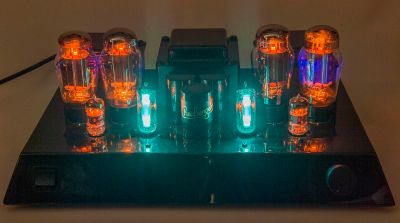For most of us, electronic technology comes in the form of solid state devices. Transistors, integrated circuits, microcontrollers. But for the first sixty years or so of the field existing, these devices either hadn’t been invented yet or were at too early a stage in their development to be either cost-effective, or of much use. Instead a very different type of electronic component ruled the roost, the vaccum tube.
A set of electrodes in an evacuated glass envelope whose electrical properties depended on the modulation of the flow of electrons through them, these were ubiquitous in consumer electronics up until the 1960s, and clung on in a few mass-market applications even as far as the mid 1970s. As cheaper and more versatile semiconductors superseded them they faded from electronic parts catalogues, and the industry that had once produced them in such numbers disappeared in favour of plants producing the new devices. Consumer products no longer contained them, and entire generations of engineers grew up never having worked with them at all. If you were building a tube amplifier in the early 1990s, you were a significant outlier.
Alive And Kicking In The 21st Century
As our consumer electronics have become ever more digital in their make-up, interest has blossomed in analogue devices, or at least devices with a visibly analogue component. In particular the world of audio has begun to chase the elusive “tube sound”, whether it be in the context of intentionally overdriven amplifiers for the guitarist, or closer to perfect ones for the audiophile.
High-end hi-fi shops are full of tube-based devices, and a plethora of tube amplifier kits are available for the electronics enthusiast. Tubes can be bought under a bewildering array of brands often at eye-watering prices, something of a surprise for a technology which might be presumed to have disappeared over four decades ago. This does raise an interesting question though, with such a large number of tube brands on the market, where are they all made, and how have their manufacturers survived for so long? The answer is relatively straightforward, yet in other aspects a story of labyrinthine complexity.
While consumer vacuum tubes might have disappeared from mundane electronics decades ago, it’s first worth pointing out that many of the old names in the vacuum tube business didn’t stop manufacturing vacuum tubes, they simply stopped making the tubes you might be familiar with. There are industrial applications in which vacuum devices are very much still with us , even though in many cases they have semiconductors snapping at their heels.
High power RF amplifiers for UHF and higher frequencies for example still use vacuum tubes, be they specialised planar tubes or slightly more exotic fare such as klystrons. Similarly there are specialised RF applications that still use travelling wave tubes, and very high …read more
Source:: Hackaday

